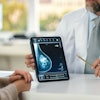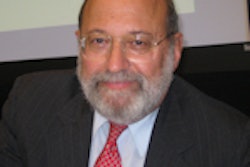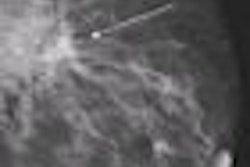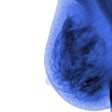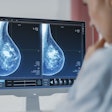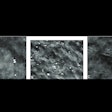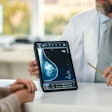Targeted breast ultrasound can be used on its own, without the need for mammography, in following up suspicious areas of concern in women younger than 30, but the jury is still out on whether mammography is needed for women ages 30 to 39, according to a pair of presentations at the RSNA meeting in Chicago earlier this month.
Although breast ultrasound is already indicated for women younger than 30 with suspicious breast findings, outcomes data are lacking for women in this age group. Another important question is whether mammography should also be performed in these patients.
Seeking to answer these questions was a research team led by Dr. Constance Lehman, Ph.D., from the University of Washington in Seattle. The group examined a cohort of 830 women younger than 30 who underwent ultrasound evaluation of suspicious lesions. The group received 1,123 ultrasound studies, and 1,091 lesions were detected.
Biopsy was recommended in 174 patients and actually performed in 168. Of those, three patients were diagnosed with cancer, for a positive biopsy rate of 1.8%, and all three cancers were detected and identified by ultrasound. No other lesions were cancer, and all of the nonmalignancies were graded as BI-RADS 1-3, indicating they were probably not malignant.
"We found no malignancy in any patient with a negative, benign, or probably benign ultrasound finding," Lehman said.
The overall incidence of cancer in the women younger than 30 is low (0.4%), and the biopsy yield is also low, the researchers noted. This indicates that surveillance with ultrasound might be preferred over biopsy in these very young patients.
"Ultrasound is highly sensitive in this setting [100%], supporting its use as the primary imaging modality," she said.
The researchers also conducted a second study that examined the use of ultrasound in women ages 30 to 39 to determine whether mammography was needed in this older patient population as well.
Over a four-year study period, the researchers pulled 1,327 cases representing 1,032 patients. In all, 98% of cases were benign (1,301/1,327) and 2% were malignant (26/1,327). All of the cancers at the site of concern were identified by ultrasound and none by mammography.
Ultrasound turned in a sensitivity rate at the site of concern of 100%, compared with 64% for mammography, and ultrasound's specificity was 89%, compared with 94% for mammography. Mammography use resulted in the detection of one additional cancer in an asymptomatic area of the breast in a 32-year-old found to have a BRCA2 mutation.
The authors concluded that imaging is warranted in women 30 to 39 who present with focal signs or symptoms of cancer due to the small but real risk of malignancy. Ultrasound shows high sensitivity in this patient population, while the added value of mammography is less clear and warrants additional research.
The studies indicate that breast physicians can be more comfortable with ultrasound's findings in guiding additional workup, said Dr. Joseph Tashjian, president of St. Paul Radiology in Minnesota. Tashjian moderated an RSNA press briefing at which the results were presented.
"Many women of this age have 'lumpy' breasts, which is different than a 'lump' in the breast," Tashjian said. "Dr. Lehman's study shows that we can be comfortable in starting out diagnostic workup with ultrasound in these women. We have had the same experience as Dr. Lehman with ultrasound. We find it very reliably answers the question as to whether the lesion is cancer or normal breast tissue."
By Ed Susman
AuntMinnie.com contributing writer
December 24, 2009
Related Reading
MRI volume navigation adds accuracy to second-look breast ultrasound, November 11, 2009
Exhibit examines reasons for missed breast ultrasound studies, November 11, 2009
Copyright © 2009 AuntMinnie.com

